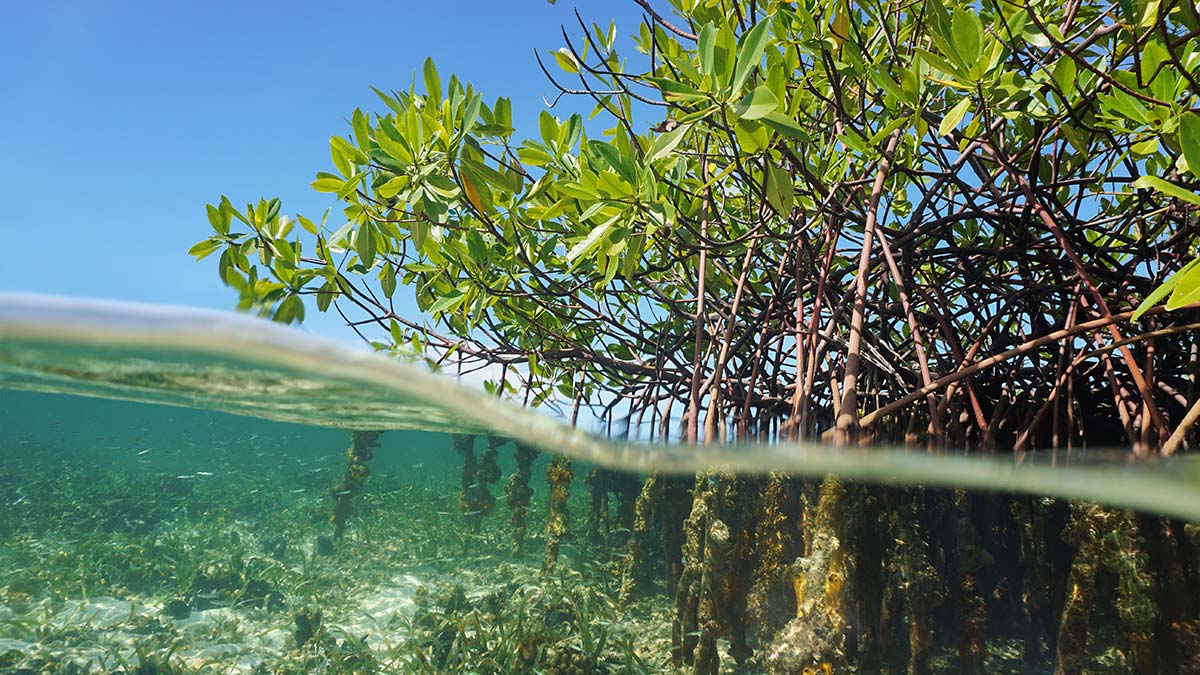
Blue carbon is a term you might not hear every day, but it plays a crucial role in our fight against climate change. Blue carbon refers to the carbon captured by the world's ocean and coastal ecosystems, such as mangroves, seagrasses, and salt marshes. These ecosystems are powerhouses when it comes to absorbing carbon dioxide from the atmosphere, storing it in their biomass and sediments for centuries. Did you know that mangroves alone can store up to four times more carbon than tropical forests? This makes them vital in reducing greenhouse gases. Understanding blue carbon can help us appreciate the importance of conserving these ecosystems, which not only support marine life but also protect coastal communities from storms and erosion.
Key Takeaways:
- Blue carbon, stored in ocean and coastal ecosystems, helps fight climate change by absorbing and storing carbon dioxide. Mangroves, salt marshes, and seagrasses play a crucial role in this process.
- Human activities and climate change threaten blue carbon ecosystems. Conservation and restoration efforts, along with international agreements, are essential for preserving their carbon storage capacity and ecological benefits.
What is Blue Carbon?
Blue carbon refers to the carbon captured by the world's ocean and coastal ecosystems. These ecosystems include mangroves, salt marshes, and seagrasses. They play a crucial role in mitigating climate change by absorbing and storing carbon dioxide from the atmosphere.
- Blue carbon ecosystems can store up to ten times more carbon per hectare than terrestrial forests.
- Mangroves, salt marshes, and seagrasses cover less than 0.5% of the ocean floor but store more than 50% of the carbon in ocean sediments.
- These ecosystems can sequester carbon for centuries to millennia, making them long-term carbon sinks.
Importance of Mangroves
Mangroves are coastal forests found in tropical and subtropical regions. They are vital for blue carbon storage and provide numerous ecological benefits.
- Mangroves can store up to four times more carbon than tropical rainforests.
- They protect coastlines from erosion and storm surges, acting as natural barriers.
- Mangrove roots provide habitats for various marine species, supporting biodiversity.
- Over 35% of the world's mangroves have been lost in the last 50 years due to deforestation and coastal development.
Role of Salt Marshes
Salt marshes are coastal wetlands found in temperate regions. They are highly productive ecosystems that contribute significantly to blue carbon storage.
- Salt marshes can sequester carbon at a rate of 2-4 metric tons per hectare per year.
- They act as natural water filters, improving water quality by trapping pollutants and sediments.
- Salt marshes provide critical habitats for migratory birds and other wildlife.
- Human activities have led to the loss of 25-50% of the world's salt marshes.
Seagrasses and Their Contribution
Seagrasses are underwater flowering plants found in shallow coastal waters. They are essential for blue carbon storage and marine ecosystem health.
- Seagrasses can store carbon up to 35 times faster than tropical rainforests.
- They stabilize the seabed, reducing coastal erosion and protecting shorelines.
- Seagrass meadows support diverse marine life, including commercially important fish species.
- Approximately 29% of the world's seagrass meadows have been lost due to human activities.
Threats to Blue Carbon Ecosystems
Despite their importance, blue carbon ecosystems face numerous threats from human activities and climate change.
- Coastal development and land reclamation are major threats to blue carbon ecosystems.
- Pollution from agricultural runoff and industrial waste can degrade these ecosystems.
- Climate change impacts, such as sea-level rise and increased storm intensity, threaten their survival.
- Overfishing and destructive fishing practices can damage seagrass meadows and mangrove forests.
Conservation and Restoration Efforts
Efforts to conserve and restore blue carbon ecosystems are crucial for maintaining their carbon storage capacity and ecological benefits.
- Protecting existing blue carbon ecosystems is the most effective way to preserve their carbon storage potential.
- Restoration projects, such as replanting mangroves and seagrasses, can help recover lost carbon sinks.
- Community involvement and education are essential for successful conservation efforts.
- International agreements, like the Paris Agreement, recognize the importance of blue carbon in climate change mitigation.
Economic and Social Benefits
Blue carbon ecosystems provide numerous economic and social benefits beyond carbon storage.
- They support fisheries and aquaculture, providing food and livelihoods for millions of people.
- Coastal tourism, such as snorkeling and birdwatching, generates significant revenue for local economies.
- Healthy blue carbon ecosystems enhance coastal resilience, reducing the costs of storm damage and erosion control.
The Power of Blue Carbon
Blue carbon ecosystems are crucial for combating climate change. These habitats, like mangroves, salt marshes, and seagrasses, absorb and store large amounts of carbon dioxide. Protecting and restoring them can significantly reduce greenhouse gases.
Besides their climate benefits, blue carbon ecosystems support biodiversity, protect coastlines from erosion, and provide livelihoods for millions. Ignoring their importance could lead to severe environmental and economic consequences.
Governments, organizations, and individuals must work together to conserve these vital areas. Simple actions like supporting sustainable seafood, reducing plastic use, and advocating for conservation policies can make a big difference.
Understanding the value of blue carbon is the first step toward a healthier planet. Let's take action now to ensure these ecosystems thrive for future generations.
Frequently Asked Questions
Was this page helpful?
Our commitment to delivering trustworthy and engaging content is at the heart of what we do. Each fact on our site is contributed by real users like you, bringing a wealth of diverse insights and information. To ensure the highest standards of accuracy and reliability, our dedicated editors meticulously review each submission. This process guarantees that the facts we share are not only fascinating but also credible. Trust in our commitment to quality and authenticity as you explore and learn with us.
